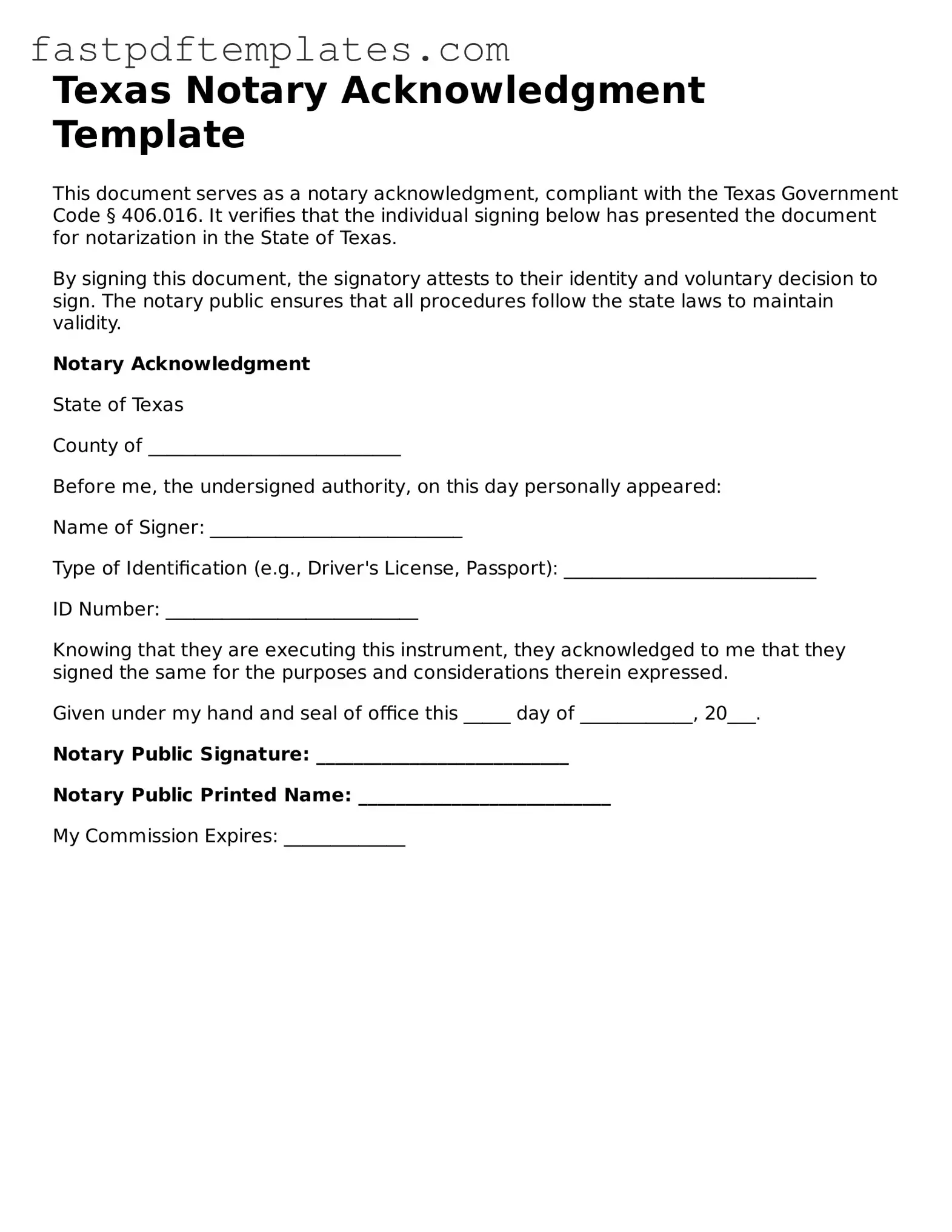Texas Notary Acknowledgment Template
This document serves as a notary acknowledgment, compliant with the Texas Government Code § 406.016. It verifies that the individual signing below has presented the document for notarization in the State of Texas.
By signing this document, the signatory attests to their identity and voluntary decision to sign. The notary public ensures that all procedures follow the state laws to maintain validity.
Notary Acknowledgment
State of Texas
County of ___________________________
Before me, the undersigned authority, on this day personally appeared:
Name of Signer: ___________________________
Type of Identification (e.g., Driver's License, Passport): ___________________________
ID Number: ___________________________
Knowing that they are executing this instrument, they acknowledged to me that they signed the same for the purposes and considerations therein expressed.
Given under my hand and seal of office this _____ day of ____________, 20___.
Notary Public Signature: ___________________________
Notary Public Printed Name: ___________________________
My Commission Expires: _____________
